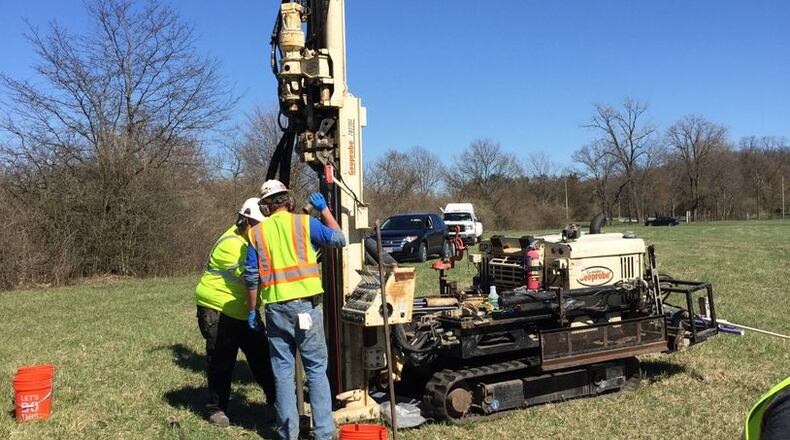“The selected remedies for the two (base) sites are expected to reduce concentrations of PFAS in groundwater and surface water and will mitigate threats to drinking water supplies on base and off base,” base representatives said in a recent statement to the Dayton Daily News.
Polyfluoroalkyl substances (PFAS) chemicals, also dubbed “forever chemicals,” are human-produced substances found in some fire-suppression foams, nonstick cookware and industrial products.
The substances have been linked to cancer and other health issues, and have become a local and national environmental concern.
Of the dual base sites identified as having the greatest potential to impact public drinking water, one is located in the area of buildings 20478 and 20479 in the base’s Area B. At one site, firefighting foam was released on two occasions, the base said.
A second site is within a fenced area near a fire training area. “(Firefighting foam) was historically used at the site for training purposes,” the base said.
The work could be more extensive. Crews are planning remedial investigation and field work to examine if aqueous firefighting foam (AFFF) has penetrated 17 sites on the base in all.
In May this year, Dayton city government sued Wright-Patterson and the U.S. Department of Defense in federal court, alleging the base failed to stop PFAS from entering city water.
The base has notified city officials of the recent work.
“The city has been notified and supports these initial mitigation steps,” said Mike Powell, director of the city’s water department. “We have reached out to the base and would like to be at the table to discuss possible remediation projects.”
Powell added: “The city wants to work with the base to deal with this serious threat to the region’s drinking water. Combining the base and city’s knowledge and expertise will undoubtedly produce the best results and protection to the aquifer.”
The Ohio Environmental Protection Agency has asked the base to modify its pumping strategy to reduce further migration of PFAS contamination off base toward Dayton’s wellfield, as well as to evaluate ways to prevent PFAS-contaminated storm water from being discharged near the Mad River wellfield.
In mid-August, the city’s lawsuit against Wright-Patterson was transferred to a federal court in South Carolina. The most recent available filings on that court’s docket are August filings noting the transfer and assignment to a judge in South Carolina.
A city spokeswoman declined to comment on the lawsuit’s current status.
Another phase of the project still ahead — the construction of 100 monitoring wells.
“This effort, totaling $4.3 million, will be starting later this winter and will install 100 monitoring wells, sample additional wells, soil, sediment and surface water to help us characterize and make future decisions on final cleanup actions for these ... (aqueous firefighting foam) release sites,” the base said.
The U.S. Army Corps of Engineers said last month it awarded a $5.9 million contract to Weston Solutions LLC to help remove per- and polyfluoroalkyl substances from ground and surface water on base.
The contract to Weston was awarded in July, about two months after the city’s lawsuit against the base was filed.
A base spokeswoman said the contract was not related to the city’s lawsuit.
“The work had already been planned through the Comprehensive Environmental Response, Compensation, and Liability Act process and a special Critical Process Analysis team review,” said Stacey Geiger, a spokeswoman for the 88th Air Base Wing, the unit that acts as the landlord unit maintaining and supporting Wright-Patterson.
About the Path Forward
Our team of investigative reporters digs into what you identified as pressing issues facing our community. The Path Forward project seeks solutions to these problems by investigating the safety and sustainability of our drinking water. Follow our work at DaytonDailyNews.com/path-forward.
About the Author

